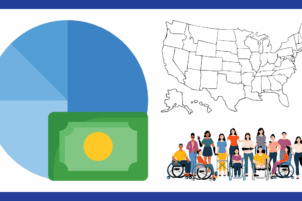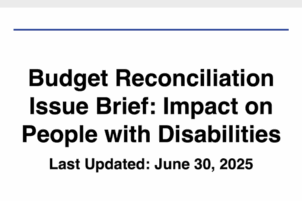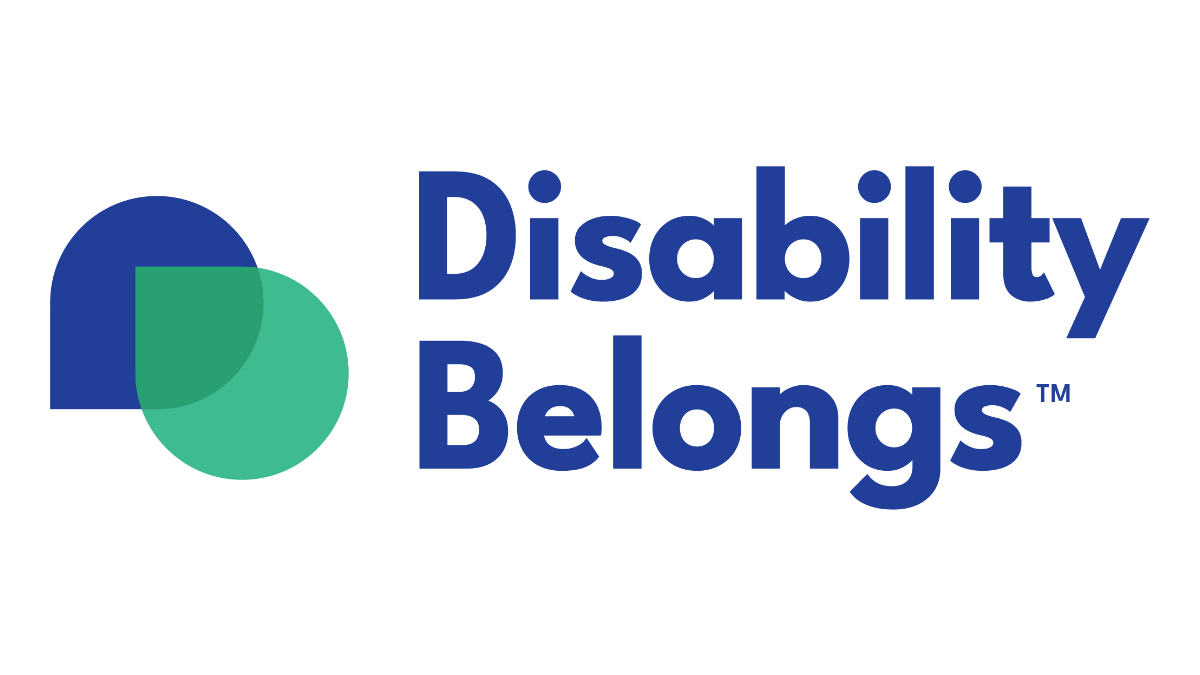Honoring Women with Disabilities During Women’s History Month
People with disabilities can thank Lois Curtis for paving the way for them to live in the community while receiving the services they need.
In what many called “the most important decision for people with disabilities in history,” the Olmstead Decision justified the right for people with disabilities to live independently but would take four years to come in effect including being heard in the Supreme Court.
At the center of the 1999 lawsuit that cited a violation of the Americans with Disabilities Act of 1990 were Lois Curtis and Elaine Wilson, two women with mental and intellectual disabilities. They were held in Georgia Regional Hospital for years after their treatment team determined they were able to live in the community because the state did not want to give them the funds they needed to live independently.
While she was growing up, Curtis was diagnosed with intellectual and mental disabilities. As a result, she would get into trouble constantly – at home and at school. The police were called several times and they would take her to jail or to a mental hospital.
However, at 11-years-old she was sent to live at Georgia Regional Hospital, a mental institution for people with disabilities. She would remain there until she was 29 years old.
Road to a New Beginning
It would not be until May 11, 1995 that Curtis’ situation began to change when Sue Jamieson, an Atlanta-based legal aid attorney took Curtis’ case challenging Tommy Olmstead, the commissioner of the Georgia Department of Human Resources, whose decision kept Curtis in the hospital. Wilson was added later as a plaintiff in the case.
A decision would be reached more than two years later in May 1997 when Judge Marvin Shoob said that the Georgia Department of Human Resources and Regional Hospital failed to place Curtis and Wilson in adequate housing.
Because of Shoob’s ruling, the Department of Human Resources and Regional Hospital appealed on December 14, 1998, and one year later on June 22, 1999, Supreme Court judge Ruth Bader-Ginsburg decided that it was unconstitutional for Curtis and Wilson to be forced to stay in the mental institution when they could live in the community.
Bader-Ginsburg created three requirements for that ruling. A person with a disability can live in the community when:
- treatment officials deem it appropriate for the patient to live in the community,
- the person doesn’t object to living in the community, and
- when there is a reasonable accommodation to live with other people who have mental disabilities.
“Institutional placement of persons who can handle and benefit from community settings perpetuate unwarranted assumptions that person so isolated are incapable or unworthy of participating in community life,” the decision read, in part.
Just 34.6 Percent of Working-Age Women with Disabilities Are Employed
More than 20.9 million women live with a disability in the U.S., including more than 10.2 million of which are working-age (18-64).
Fully one-in-five Americans have a disability and studies show that most of them want to work. Yet 70 percent of working-age Americans with disabilities are outside of the workforce. Only 34.6 percent of working-age women with disabilities (3.5 million) are employed in the U.S. compared to 82.5 percent of working-age women without disabilities. This is in line with the rest of the country, with fully one-in-four American adults having a disability just 37 percent of those who are working-age being employed, despite polls showing that most of them want to work. This leads to approximately 22.6 percent of women with disabilities living in poverty compared to 14.7 percent of women without disabilities.
Women of Color with Disabilities Continue to Face Additional Barriers
The 2018 Annual Disability Statistics Compendium Supplement does not have female employment disaggregated by race. However, with more than 7,500 African Americans with disabilities leaving the workforce last year, it is likely that women of color with disabilities have additional barriers.
There are more than 5.6 million African Americans living with a disability in the U.S. Out of more than three million working-age African Americans with disabilities, barely 934,589 have jobs. According to the Compendium, just 28.6 percent of U.S. African-American civilians with disabilities ages 18-64 living in the community had a job, compared to 73.7 percent of blacks without disabilities.
Today there are 1.1 million black students (K-12) with diagnosed disabilities in America; however, the deck is stacked against them. Due to redlining and other factors, many of them go to highly under-resourced schools that do not have enough special educators. Moreover, while it is easy to see and understand when someone is deaf and/or blind, frequently “invisible disabilities” such as ADHD and dyslexia are not diagnosed and students do not get the supports they need to achieve.
Frustrated, students with undiagnosed or addressed disabilities can act out and become suspended. Studies show that when students miss too many days, they get so far behind in class that it can lead to them dropping out of school and entering the school-to-prison pipeline. Today there are more than 750,000 people with disabilities behind bars in America. Indeed, half of all women who are incarcerated in America have a disability. The majority of them do not have high school diplomas, are functionally illiterate and are people of color. There are more approximately 150,000 people who are deaf incarcerated today, and approximately the same number are blind.
Overall, only 66 percent of students with disabilities graduate high school compared to 84 percent of students without disabilities. However, only 62 percent of black students with disabilities graduate high school compared to 76 percent of black students without disabilities.
Leading the Way
Our nation’s economy is strongest when it is inclusive of the value that diverse talent brings to the workplace. Haben Girma became the first Deafblind person to graduate from law school when she earned her degree from Harvard Law School in 2013.Harriet Tubman had epilepsy, performer Selena Gomez lives with lupus, business leader and Shark Tank superstar Barbara Corcoran is dyslexic and gymnast Simone Biles has ADHD.
Since the Olmstead Decision went into effect in 1999, Curtis has been able to live in an apartment she shares with a woman who helps her with activities of daily living.
Curtis takes art classes at the local hobby shop and is a talented artist. She sells her drawings for profit to buy more art supplies. She is very friendly and has no trouble making friends. She’s proactive in her life, attending monthly meetings with people who care about her to plan the next month in her life.
Curtis is living life on her own terms doing what she loves to do every day. In an interview with Lee Sanders, a Career Specialist in Roswell, Georgia, she said:
“Well, I make grits, eggs, and sausage in the morning and sweep the floor. I go out to eat sometimes. I take art classes. I draw pretty pictures and make money. I go out of town and sell me artwork. I go to church and pray to the Lord. I raise my voice high! In the summer I go to the pool and put my feet in the water. Maybe I’ll learn to swim someday. I been fishing. I seen a pig and a horse on a farm. I buy clothes and shoes. I have birthday parties. They a lot of fun. I’m not afraid of big dogs no more. I feel good about myself. My life a better life.”
All throughout Women’s History Month, we will post pieces about female role models with disabilities. These women are featured examples of RespectAbility’s #RespectTheAbility campaign, which highlights successful individuals with disabilities, as well as companies that employ people with disabilities. Read more today:
- Simone Biles: Olympic & Disability Champion Makes History While Mesmerizing Many
- Shark Tank Entrepreneur Barbara Corcoran Proves Dyslexics Can Be Successful
- Deafblind Lawyer Haben Girma Advocates for Disability Rights
- Selena Gomez Serves as Role Model for Young Women with Disabilities
- Salma Hayek, Role Model for Latina Woman with Disabilities
- Frida Kahlo, Role Model for Artists, People with Disabilities and Bisexual Women
- Cristina Sanz: First Hispanic with a Disability As Part of Ensemble Cast to Be on an Emmy Award-Winning Show
- Harriet Tubman, Legendary Poet and Civil Rights Activist with Epilepsy, Inspires Generations
- Maya Angelou, Legendary Poet and Civil Rights Activist Who Had Disability, Inspires Generations
- Selma Blair: Positive Role Model for Success
- Lori Golden, Self-Advocate and Trailblazer in Disability Inclusion in the Workplace
- Successful Pioneer of Change Janet LaBreck Serves as Role Model for African American Women with Disabilities
Research assistance from RespectAbility Fellow Ryan Knight.









